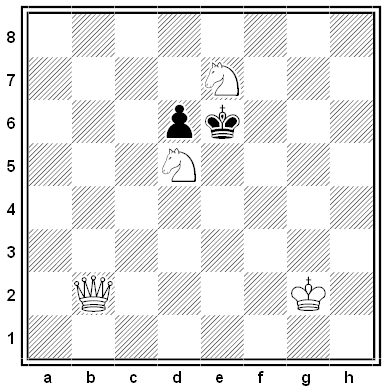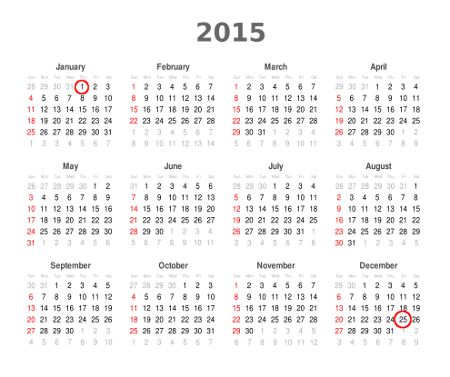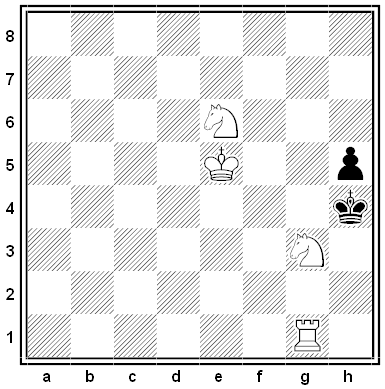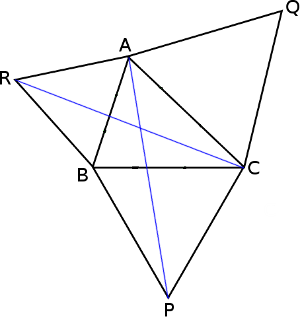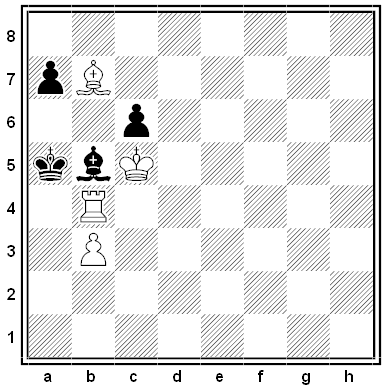Puzzles
The Three Hats Game
Three players enter a room, and a maroon or orange hat is placed on each one’s head. The color of each hat is determined by a coin toss, and the outcome of one toss has no effect on the others. Each player can see the other players’ hats but not his own.
The players can discuss strategy before the game begins, but after this they may not communicate. Each player considers the colors of the other players’ hats, and then simultaneously each player must either guess the color of his own hat or pass.
The group shares a $3 million prize if at least one player guesses correctly and no player guesses incorrectly. What strategy will raise their chance of winning above 50 percent?
Red and Black
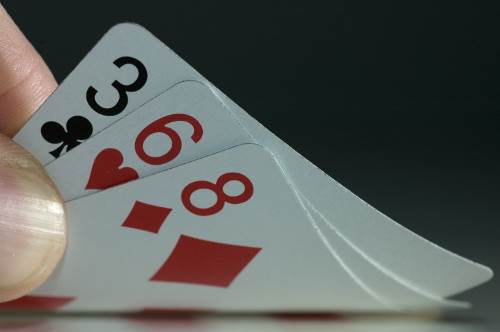
I propose a card game. I’ll shuffle an ordinary deck of cards and turn up the cards in pairs. If both cards in a given pair are black, I’ll give them to you. If both are red, I’ll take them. And if one is black and one red, then we’ll put them aside, belonging to no one.
You pay a dollar for the privilege of playing the game, and then we’ll go through the whole deck. When the game is over, if you have no more cards than I do, you pay nothing. But for every card that you have more than I, I’ll pay you 3 dollars. Should you play this game?
Black and White
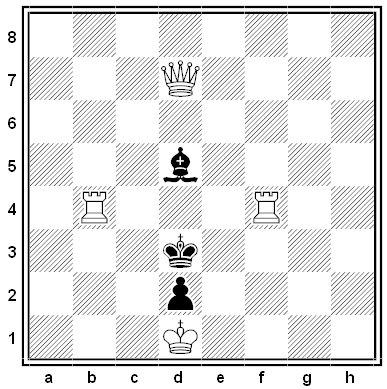
By W.A. Shinkman. This is a self-mate in two moves: White makes a move, Black is allowed to make any legal reply, then White plays a second move that forces Black to checkmate him.
A Holiday Puzzle
New Year’s Day normally falls one week after Christmas: If Christmas falls on a Thursday, then New Year’s Day will fall on a Thursday as well. What is the most recent year in which Christmas and New Year’s Day fell on different days of the week?
Switching Visits
A prison warden greets 23 new prisoners with this challenge. They can meet now to plan a strategy, but then they’ll be placed in separate cells, with no means of communicating. Then the warden will take the prisoners one at a time to a room that contains two switches. Each switch has two positions, on and off, but they’re not connected to anything. The prisoners don’t know the initial positions of the switches. When a prisoner is led into the room, he must reverse the position of exactly one switch. Then he will be led back to his cell, and the switches will remain undisturbed until the warden brings the next prisoner. The warden chooses prisoners at his whim, and he may even choose one prisoner several times in a row, but at any time, each prisoner is guaranteed another visit to the switch room.
The warden continues doing this until a prisoner tells him, “We have all visited the switch room.” If this prisoner is right, then all the prisoner will be set free. But if he’s wrong then they’ll all remain prisoners for life.
What strategy can the prisoners use to ensure their freedom?
Black and White
Threewise
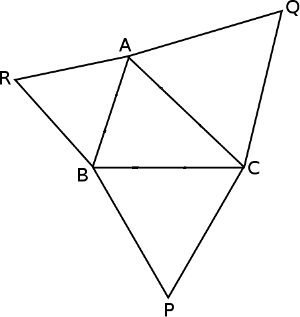
Draw an arbitrary triangle and build an equilateral triangle on each of its sides, as shown.
Now show that AP = BQ = CR.
Black and White
Ice Work

Three hockey pucks, A, B, and C, lie in a plane. You make a move by hitting one puck so that it passes between the other two in a straight line. Is it possible to return all the pucks to their original positions with 1001 moves?

